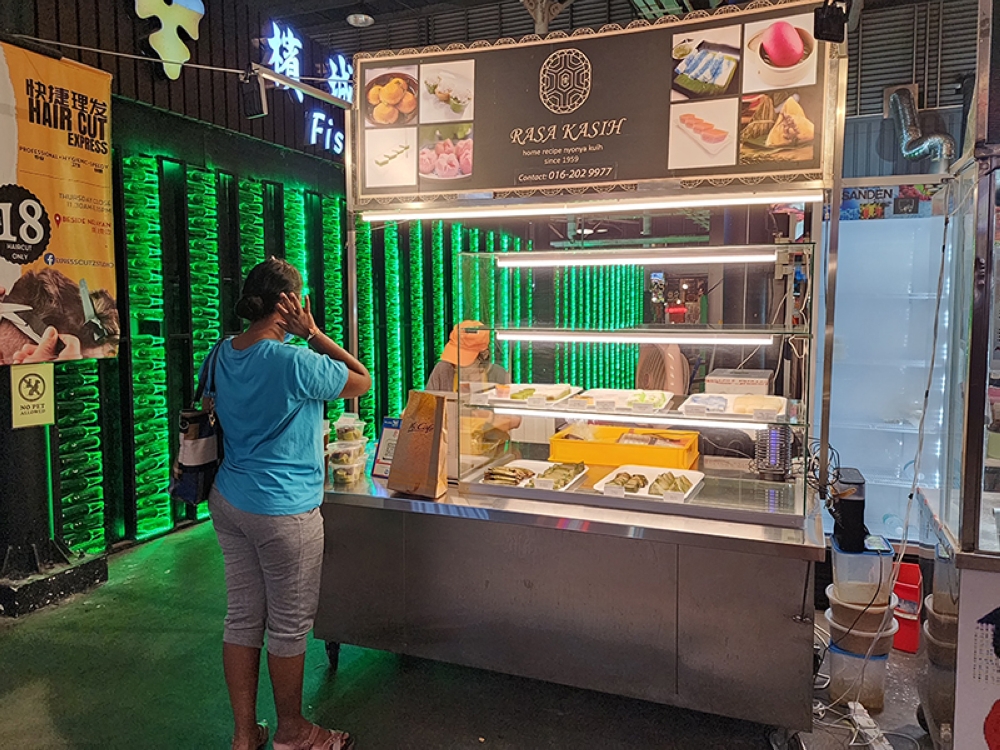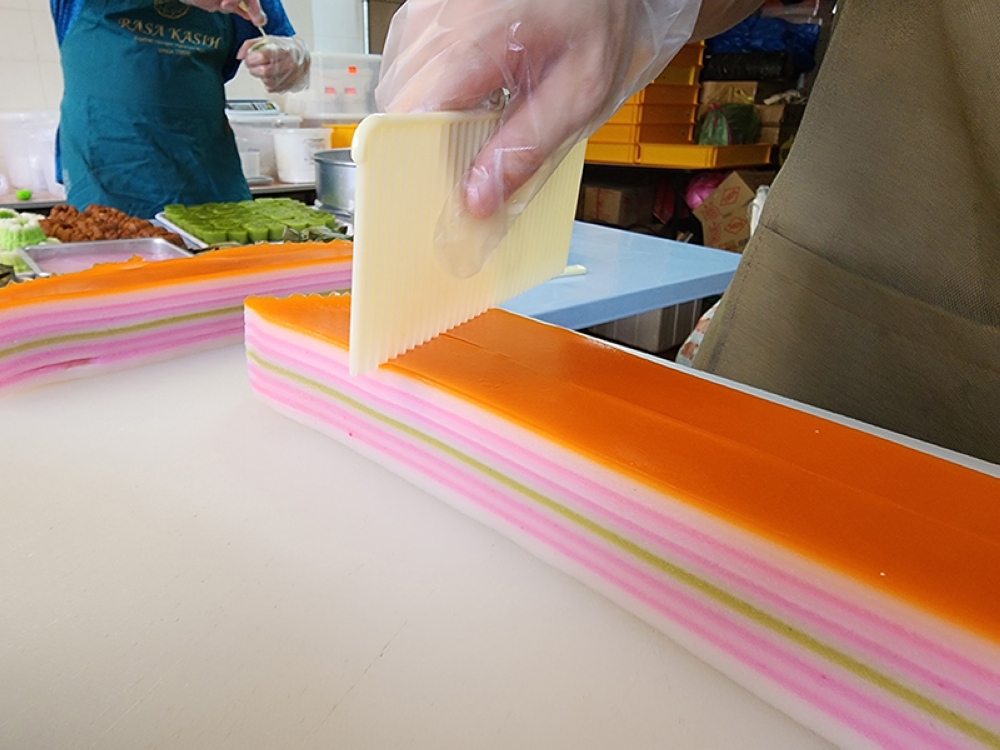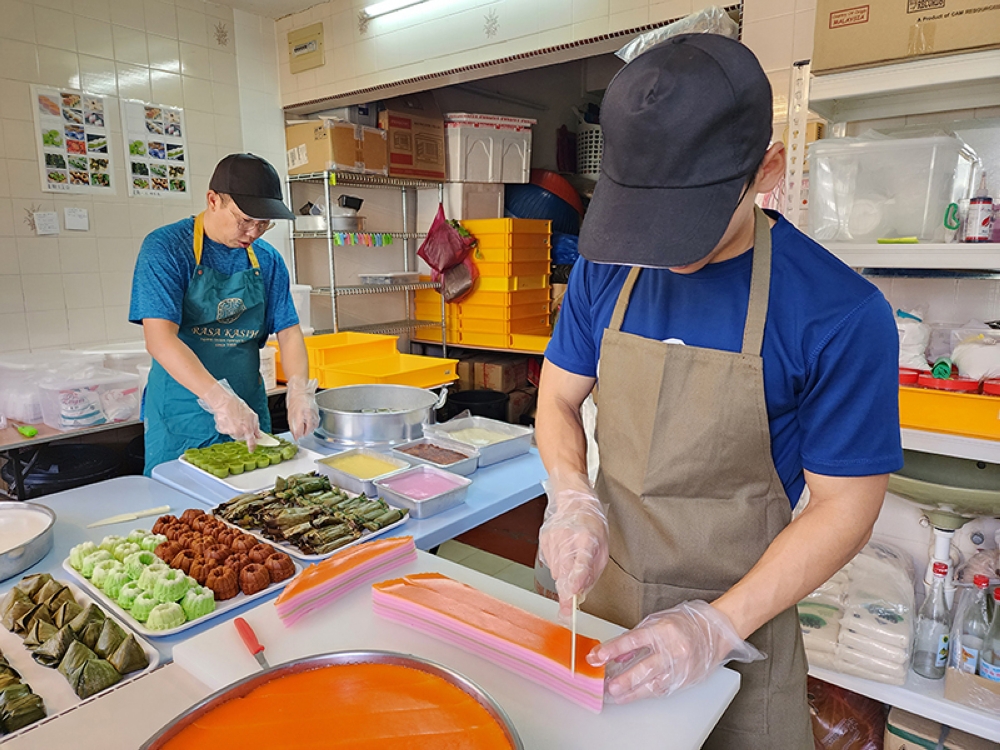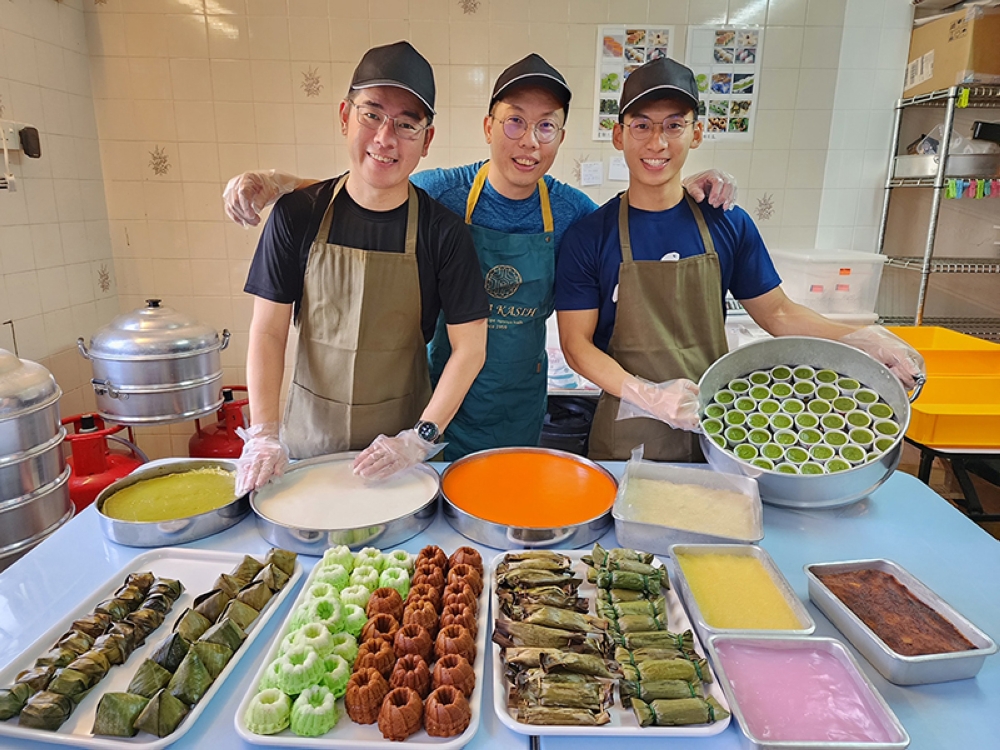GEORGE TOWN, April 22 — The sky is still dark, and dawn has yet to break but Baylon Tham is carefully pouring the pink liquid mix into a mould.
Meanwhile, his partner Cheng Wei Da is preparing bunches of pandan leaves for use as colouring and flavouring.
Tham waits for the mixture to set before he pours on another layer of a different colour.
He repeats the process until there are a total of 12 layers before moving on to start making other batches of kuih.
Tham is making kuih lapis, which in Hokkien is known as kau chan kuih (translated to mean nine-layer kuih), but instead of making the traditional nine layers, he has added three more layers.
"This is to give it a more delicate look even though it means more tedious work for me,” he said.

The layering of the mixture to make the kuih requires skill, precision and patience as he has to pour an even layer, wait for it to set and then pour the next layer. Repeat.
"I have to stand there and wait for it to set because if I leave it to set for too long, the next layer may not stick and if I don’t wait for it to set, it might mix into the bottom layer, so it is all about timing,” he said.
This means that he will have to stand over the tray for at least 45 minutes as he pours and waits for each layer to set.
Soon, another partner, Kenny Loh, arrives to help them make several other types of kuih.
The trio starts making kuih at 6am daily, except on Tuesdays, and surprise... they all have day jobs!
Tham is an architect, Cheng an engineer and Loh a designer.

The three of them jointly rented a two-storey building and set up their respective workspaces in the same building; Tham and Cheng’s offices are on the first floor while Loh’s studio is on the ground floor.
"So, we have to start making the kuih early before we start our day jobs, by around 10am, but sometimes, I have to run downstairs to check on the kuih mid-morning,” Tham said.
Since all three of them do not have experience in the food and beverage business, this kuih making experiment is more of a labour of love and passion.
"This is why we are called Rasa Kasih, it is our way of sharing our love for kuih with others,” Tham said.
The idea to start making and selling kuih came about when Loh’s YouTube videos on making Nyonya kuih during the pandemic became popular and he kept getting calls asking if he accepts orders.
The pandemic also played a role in their decision to set up their kuih stall.

"When our business dropped to almost zero during the pandemic, we realised we cannot put all our eggs in one basket, so we decided to set up another business together,” Tham said.
The recipes behind the kuih they make date back to the 1950s when Loh’s grandmother sold kuih for a living.
"My mother had to help to sell kuih and she told me sometimes, if business was slow, she had to fork out her own pocket money to buy the kuih for fear of being scolded for not selling all of the kuih,” he said.
The kuih recipes the trio use were handed down from Loh’s grandmother and his father.
Tham said it is not easy to find Nyonya kuih that tastes like the ones made at home by the Nyonyas in the old days.
There are also fewer places selling Nyonya kuih due to the labour intensive process involved and low profit margins.


The trio invested in high quality ingredients and though the return on investment for their venture was low, they pushed on in hopes of expanding into other Nyonya food in future.
"Our aim is to keep the old school tastes and flavours of the Nyonya kuih alive,” Tham said.
It is also why he spent so much time on the kuih lapis alone; he wanted to make sure it can be peeled layer by layer, something that he remembered doing when eating it as a child.
"We want to bring back memories with our kuih too,” he said.
He added that they used only natural colouring such as pandan for green and blue peaflower for blue for the kuih.
Loh said there was a time when Nyonya kuih was served as tea time snacks in rich Peranakan families’ homes.
"It was why the kuih was cut into small diamond shapes, easier for the Nyonyas to eat,” he said.

Loh said they hoped to expand their business to include all things Peranakan under one roof.
"We hope to have a section on Nyonya food and kuih and a section on Nyonya designs and attire, all in the same building,” he said.
Loh also designs the Nyonya kebaya under his Kenny Loh Couture line.
The Rasa Kasih stall, which started last August, is in the Fisherman’s Wharf Food Court at Karpal Singh Drive.
Among the varieties of kuih they sell are kuih bingka, beeko (steamed sticky glutinous rice), kuih kosui, angku, kuih talam, Puteri Ayu, pulut pisang, pulut inti, kuih koci, pulut tai tai and kuih lapis.
It is open from 6pm to 10pm daily except Tuesdays.
* Follow us on Instagram @eatdrinkmm for more food gems.






















